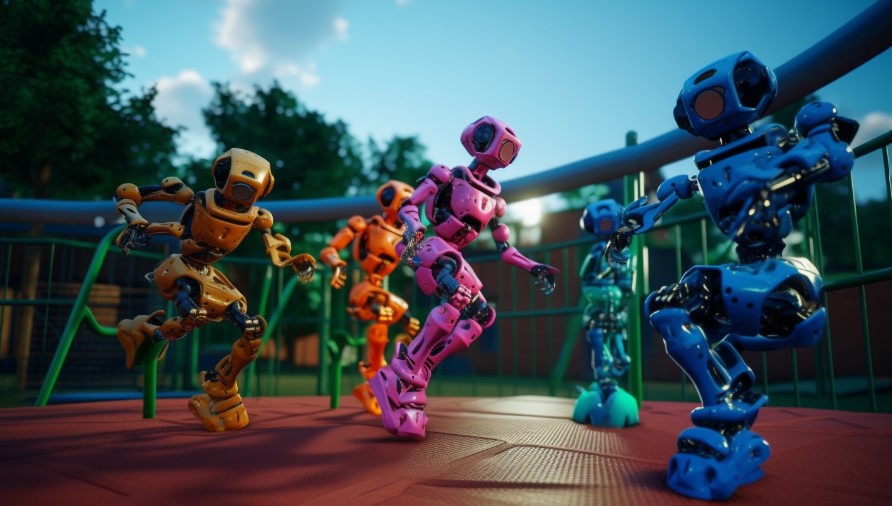
Introduction
GPT-4 prompt engineering is the science and art of crafting good prompts. Auto GPT, Jarvis, Memory GPT, and Anthropics Are Pushing Prompt Engineering to the next level.
Prompt engineering is the art of designing the right input for an AI model to get the best output. It’s like giving a hint to a smart kid to help them solve a problem.
But what if the kid could give hints to itself? That’s what some of the new AI models are doing. They are self-prompting and self-completing tasks based on their own goals.
In this blog, I’m going to tell you about some of these amazing models like Auto GPT, Jarvis, Memory GPT, Anthropics, and Chaos GPT, and how they use prompt engineering in different ways.
You’ll also see how they can go wrong and cause problems if they’re not careful. Let’s dive in!
What is Auto GPT and why is it a game-changer?
Imagine you could tell an AI model to do anything you want in natural language and it would figure out how to do it by itself. That’s what Auto GPT can do.
It’s a model that can prompt itself and complete tasks without any human guidance. It does this by using a technique called Chain of Thought prompting and reflection.
Chain of Thought prompting and reflection is a way of generating a sequence of prompts that lead the model to the desired goal. The model starts with a mission statement, like “Write a blog post about prompt engineering”. Then it generates a series of prompts that help it achieve the mission, like “What is prompt engineering?”, “why is it important?”, “what are some examples?”, etc.
The model also reflects on its own prompts and outputs and adjusts them if needed. For example, if the model realizes that it has written something irrelevant or incorrect, it can delete it and generate a new prompt or output.
This way, Auto GPT can autonomously complete tasks that would normally require human input or supervision. It can write texts, generate images, answer questions, and more. It can also learn from its own experience and improve over time. It’s like having a self-learning and self-improving assistant that can do anything you ask it to do.
“1 GPT call is a bit like 1 thought. Stringing them together in loops creates agents that can perceive, think, and act, their goals defined in English in prompts.”
Andrej Karpathy (@karpathy) / Twitter
Imagine a being with an unlimited memory capacity, capable of tapping into vast reserves of knowledge to determine the optimal course of action.
And then this being can enhance its previous decision by subjecting it to an entirely divergent mode of thinking/perspective. Then it goes one step beyond by repeating it forever till it achieves what it wants to.
Ravi Sharma (@rvsharma4sap) / Twitter
Some Crazy Game-Changing Use Cases of Auto GPT
Automated Business Development: Autonomously developing a business and managing it to increase the overall net worth is one of the crazy and wildly discussed use cases.
It can use GPT-4’s knowledge of economics, marketing, and entrepreneurship to create business plans, products, services, and strategies.
What’s more, it can find popular websites and their APIs and then write code to launch and promote its managed businesses.
Self-Improvement: It can use GPT-4’s learning abilities to acquire new skills and knowledge. Learn from its mistakes and successes, and update its preferences and goals based on feedback and rewards.
For example, It can learn a completely new game theory, access third-party websites to understand it deeply, then generate the associated artifacts and extend the game levels even further or simplify it based on the user’s preferences.
Jarvis: Microsoft’s new demo of a hugging GPT model
Jarvis is a system that can do amazing things with AI. Again, It’s based on GPT-4, a powerful AI model that can generate natural language.
But Jarvis is not just GPT-4. Jarvis is a team of AI models that work together to solve complex AI tasks.
Jarvis works as a collaborative system that consists of an LLM as the controller and numerous expert models as collaborative executors (from HuggingFace Hub). An LLM is a language and logic model that can understand natural language and logic. An expert model is a specialized model that can do a specific task, like image generation, speech recognition, or sentiment analysis.
For example, if you want Jarvis to create a logo for your company, you can give it a prompt like this:
“Create a logo for my company called Jarvis. It should be simple, elegant, and related to AI.”
Jarvis will use the LLM as the controller to understand your prompt and break it down into subtasks. Then it will use the expert models as collaborative executors to perform the subtasks.
For example, it will use an image generation model to create a logo, a sentiment analysis model to check if the logo is elegant, and a text generation model to explain the logo. Then it will use the LLM again to combine the outputs and present them to you.
It’s like having a team of AI experts at your disposal.
Jarvis can plan tasks, select models, execute them, generate responses based on the user’s requests, and adjust itself as per the user’s mood.
Some Use Cases of Microsoft Jarvis – The Multi-Model Execution
This image available on the Jarvis GitHub page best describes the overall Task planning, Model Selection, Task Execution, and Response Generation.

Memory GPT: A long-term memory add-on to ChatGPT
What if ChatGPT can remember everything you discussed in the long gone past and apply that to your current conversations?
ChatGPT is a chatbot that can talk to you about anything. It’s based on GPT-4, a powerful AI model that can generate natural language. But ChatGPT has a problem. It can’t remember what you talked about before. It forgets everything after each chat session.
That’s where Memory GPT comes in. Memory GPT is a system that gives ChatGPT long-term memory. It does this by using GPT-4 to compress previous chats into short text prompts/reference tokens that can be used to restore the chat history when needed.
For example, if you chat with ChatGPT about your favorite movie, Memory GPT will create a prompt/reference token like “movie: The Matrix”. Then, if you chat with ChatGPT again later, Memory GPT will use the prompt/reference token to remind ChatGPT what you talked about before. This way, ChatGPT can continue the conversation and make it more engaging and personal.
Some of the features and capabilities of Memory GPT are:
- Compression: Memory GPT can compress long chats and generate fewer tokens to capture the gist of the chat.
- Restoration: Memory GPT can restore the chat history from the compressed tokens using GPT-4’s generative abilities. It can expand the prompts into coherent, fluent texts that can be used as context for ChatGPT.
Some Crazy Use Cases of Memory GPT – A Dead and a Digital Twin
A dead man’s talking: Resurrecting the dead from its caches (ashes?) Memory GPT can enable ChatGPT to simulate a conversation with a person who is dead by using their past chats, writings, speeches, or other sources of information as context.
For example, if you wants to chat with a deceased celebrity, author, or historical figure, Memory GPT can use their available data to generate a prompt that can restore their personality and style.
A digital Twin: Imagine conversing with Memory GPT based twin and making it handle some specific discussions with your wife / your boss on your behalf.
Anthropics-Claude: Plan for a 10x more powerful model GPT-X
Claude is not your average AI. The AI assistant is touted to be helpful, honest, and harmless ( that it makes Mother Teresa look like a slacker), and with its Anthropic-approved design, Claude is the answer to prevailing RESPONSIBLE-AI prayers.
It knows how to be nice to humans and not hurt them. It learned that from a special training called Constitutional AI and harmlessness training. Sounds fancy, right?
But it just means that Claude respects your values and choices, and tells you when it’s not sure about something.
Claude can also change its personality, tone, and behavior depending on what you want. You can make it funny, serious, friendly, or anything else. How cool is that?
Anthropic is not messing around. It has raised a huge amount of money from some of the biggest names in tech and AI. Reid Hoffman, Dustin Moskovitz, Peter Thiel, and Vitalik Buterin are all backing this company. They must see something special in it.
Angelic Use cases of Claude
But what is Anthropic working on? Well, it’s working on a monster of a model that will blow your mind. It’s called GPT-X and it’s going to be 10 times more powerful than GPT-4. That’s right, 10 times.
GPT-X will have 10 trillion parameters and be able to generate natural language like a pro. It will be able to write about anything and everything, in any language and any style.
But that’s not all. GPT-X will also have a human touch. It will learn from human feedback and corrections during training and inference. That means it will get better and better as it interacts with humans. It will also avoid making harmful or biased outputs that could cause problems. GPT-X will be a model that you can trust and work with.
Claude is not just hype. It has been tried and tested by some of the best companies and products in the world. Notion, Quora, DuckDuckGo, and Juni Learning are all testing Claude to power their amazing features and services. They have seen the difference that Claude makes.
Claude is not like other AI systems that can be harmful, confusing, or stubborn. Claude is helpful, honest, and harmless. Claude is easy to talk to and understand. Claude listens to you and does what you want.
Will Claude be the AI assistant we have always dreamt of?
Chaos GPT: A malicious version of Auto GPT
What if I told you there’s a new tool that uses GPT models to create chaos and mayhem?
It’s called Chaos, and it’s a web app that lets you generate fake news, fake reviews, fake tweets, fake emails, and more. You can use it to prank your friends, sabotage your enemies, or just have some fun.
But there’s a dark side to Chaos. It could also be used to spread misinformation, manipulate public opinion, ruin reputations, and even start wars. Imagine if someone used Chaos to create a fake tweet from a world leader threatening nuclear war. Or a fake news article claiming that a deadly virus has escaped from a lab. Or a fake email from your boss firing you.
Chaos is not a toy. It’s a weapon of mass destruction. And it’s available to anyone with an internet connection and a credit card.
The creators of Chaos claim that they are doing this for entertainment and education purposes only. They say that they have safeguards in place to prevent abuse and harm.
They say that they are not responsible for what people do with their tools.
But I don’t buy it. I think they are playing with fire and putting us all at risk. I think they are unleashing a monster that could destroy humanity.
Don’t believe me? Try it for yourself. Here is the video link to the source:









Amazing.
May I simply just say what a comfort to uncover an individual who actually knows what they are talking about on the internet. You definitely realize how to bring an issue to light and make it important. More and more people have to look at this and understand this side of your story. Its surprising you arent more popular because you surely possess the gift.